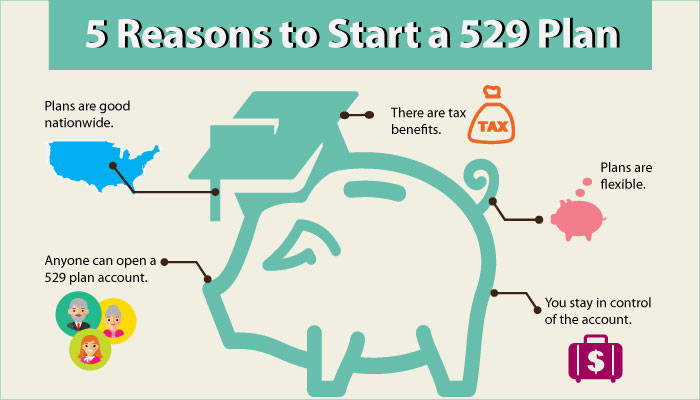Q: Should I consider funding a 529 for my kids when I have student loan debt?
A: One of the most common questions I hear as a financial advisor is whether a client should focus on saving for a child’s education if they are still paying off student loan debt. The answer depends, in large part, on the how much debt and how much interest one is paying. If the amount of debt is significant and the interest rate is exorbitant, the focus should land on one’s own debt reduction before engaging too heavily in a 529. To use a metaphor, if you’re on an airplane with your child and the oxygen mask drops, you want to make sure your own mask is secure first (aka: you’re no good to your child if you’re not breathing). The same is true for 529s. What good is paying for your child’s education if you’ll become a financial burden to them after they graduate?
However, for many clients, it makes sense to start funding a 529 even with some level of debt to pay off.
For one thing, the potential rate of return on your investment into the 529 can potentially exceed the interest on your loans. Aside from the potential rate of return, we find that the best reason to start funding a 529 is as much due to psychology as anything else. The first step is always the most difficult.
Once you start a plan, you’ll find yourself in the posture to more over time. Many who “wait” never end up getting around to it.
Q: Can 529s only be used in the state in which you reside?
A: 529s are flexible and can typically be used in any state. The biggest impact of your state residence is the potential for tax savings on contributions at the state level. Some states don’t offer state-level tax benefits or phase out the benefits based upon income level. You’ll want to look at your specific state’s tax treatment for 529s.
Q: What happens if your kids don’t use it? If you end up with more than you needed?
A: There is a lot of misinformation out there about 529s. Some are under the impression that, if their child doesn’t go to college, their account balance vanishes into thin air. The truth is that contributions can always be taken out without tax or penalty. However, gains are subject to income taxes plus 10 percent, which is why you want to be mindful not to overfund a 529. Additionally, 529s are completely transferrable to siblings and first cousins. More kids in the family means less risk of overfunding. There is no universal “right amount” to put into a 529. It makes sense to work with a financial planner to determine what’s best for your family.
Q: What are the benefits of using a 529 vs. cash flow or another savings vehicle?
A: The government has designed tax benefits unique to the 529 that you wouldn’t get when using other resources such as cash flow or selling a real estate property. Under current tax law, a 529 can be cashed out entirely tax-free if utilized toward qualified college expenses. In contrast, if I pay out of cash flow or if I sell a property or a stock, I have to pay any realized gains.
Let’s then compare the strategy of paying for college out of cash flow vs. utilizing a 529.
• Assuming $30,000 of annual college costs and a 33 percent tax bracket, I have to earn $45,000 to pay for one year of education ($15,000 goes toward taxes and $30,000 goes toward the university). • If I had utilized a 529, contributing $3,500 a year for 17 years and assuming a 7 percent rate of return, my total contributions of $60,000 could potentially grow to $120,000. Of course, this is a market-based asset, so we assume growth to $120,000, but it is subject to the volatility of the stock market. Compare that with cash flow, where I lose $60,000 in taxes over four years. I recommend other vehicles to supplement a 529 when a client plans to save for college, but a 529 can often be the best place to start.
David Mann, CLU, CFP, is a wealth management adviser. Visit his website, davidmann-nm.com. To contact him, e-mail david.mann@nm.com or call 702-734-4425.










